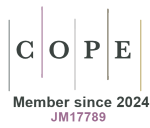Regional Formularies in Italy: current state and future perspectives
DOI:
https://doi.org/10.33393/grhta.2024.2677Keywords:
Italy, Regional Formularies, Regional Therapeutic CommitteesAbstract
Regional Formularies (RF) are considered part of pharmaceutical policies implemented by regions to govern access of medicines to regional market. However, they have been actually challenged, because of their presumed impact on differences of patient’s access across the regions. The paper aimed at investigating the current status of RF and Regional Therapeutic Committees (CTR) and at suggesting/recommending possible reforms.
The current status was investigated through a questionnaire administered to the regional pharmaceutical departments. Recommendations were retrieved from a multi-stakeholder work group carried out on 30-31 March 2023, embedded into a Forum focused on the regional pharmaceutical policies.
Nineteen out of twenty-one regions responded to the survey: 12 use RF, mainly managed by the CTR; the RF frequency of update and the time needed for drugs listing greatly vary across regions; pharmacists, specialists and general practitioners are always represented in CTR, whereas other healthcare professionals and experts are more rarely involved; in 3 regions the CTR does not publish any RF update; the CTR mainly rely, to take decisions, on the dimension of the target population, the cost of therapy compared to alternative treatments and the impact on pharmaceutical expenditure.
The working group recommended to overcome the RFs, if they are merely considered a list of available drugs at regional level, focusing CTR activities to ensure market access and to govern the prescribing behaviour, and strengthening/anticipating the flow of information from the Italian Medicines Agency (AIFA) to the regions, to enable a more efficient approach to local access to drugs.
References
- Jommi C, Pippo L, Bortolami A et al. Il governo dell’assistenza farmaceutica in Italia: il ruolo di Stato e Regioni. Politiche sanitarie. Anno 2021, Vol. 22, N. 3: 117-124. https://www.dephaforum.it/wp-content/uploads/2023/02/Paper_Politiche_-Sanitarie.pdf (Accessed July 2023)
- De Rosa M, Messori A, Scroccaro G. Il sistema dei prontuari in Italia 2. Aboutpharma Srl; 2010.
- Prada M, Ruggeri M, Sansone C, et al. Timeline of authorization and reimbursement for oncology drugs in Italy in the last 3 years, Medicine Access @. Point Care. 2017;1(1):e29-e36. DOI: https://doi.org/10.5301/maapoc.0000007
- Russo P, Mennini FS, Siviero PD, Rasi G. Time to market and patient access to new oncology products in Italy: a multistep pathway from European context to regional health care providers. Ann Oncol. 2010;21(10):2081-2087. https://doi.org/10.1093/annonc/mdq097 PMID:20335370 DOI: https://doi.org/10.1093/annonc/mdq097
- Mantuano M, Daniel F, Urbinati D. Regional time to market of innovative drugs in Italy. PHP70. Value Health. 2016;19(7):451. https://doi.org/10.1016/j.jval.2016.09.608 DOI: https://doi.org/10.1016/j.jval.2016.09.608
- Pizzimenti V, Formica D, Sultana J, et al. Access of medicines to the market: three years’ experience of Sicily’s regional drug formulary. Gazz Med Ital- Arch Sci Med. 2020;179(5):317-325. https://doi.org/10.23736/S0393-3660.19.04030-0 DOI: https://doi.org/10.23736/S0393-3660.19.04030-0
- Nicolucci A, Caputi A. Difformità regionali di accesso ai nuovi farmaci per il diabete a distribuzione territoriale. JAMD. 2021;24(4):257-263. https://doi.org/10.36171/Jamd21.24.4.3 DOI: https://doi.org/10.36171/jamd21.24.4.3
- Jommi C, Costa E, Michelon A, Pisacane M, Scroccaro G. Multi-tier drugs assessment in a decentralised health care system. The Italian case-study. Health Policy. 2013;112(3):241-247. https://doi.org/10.1016/j.healthpol.2013.06.004 PMID:23850166 DOI: https://doi.org/10.1016/j.healthpol.2013.06.004
- Prada M, Rossi L, Molchanova E, Mariano EE. Italian regional access for drugs: 20 regions vs 21 procedures. PNS59. Value Health. 2020;23:S653. https://doi.org/10.1016/j.jval.2020.08.1503 DOI: https://doi.org/10.1016/j.jval.2020.08.1503
- Urbinati D, Cioni L, Tucci C. Centralization and complexity of drug market access process across Italian Regions. PHP157. Value Health. 2017;20(9):679. https://doi.org/10.1016/j.jval.2017.08.1689 DOI: https://doi.org/10.1016/j.jval.2017.08.1689
- ISTAT. Popolazione residente al 1/1/2023 http://dati.istat.it/Index.aspx?DataSetCode=DCIS_POPRES1, (Accessed July 2023).










